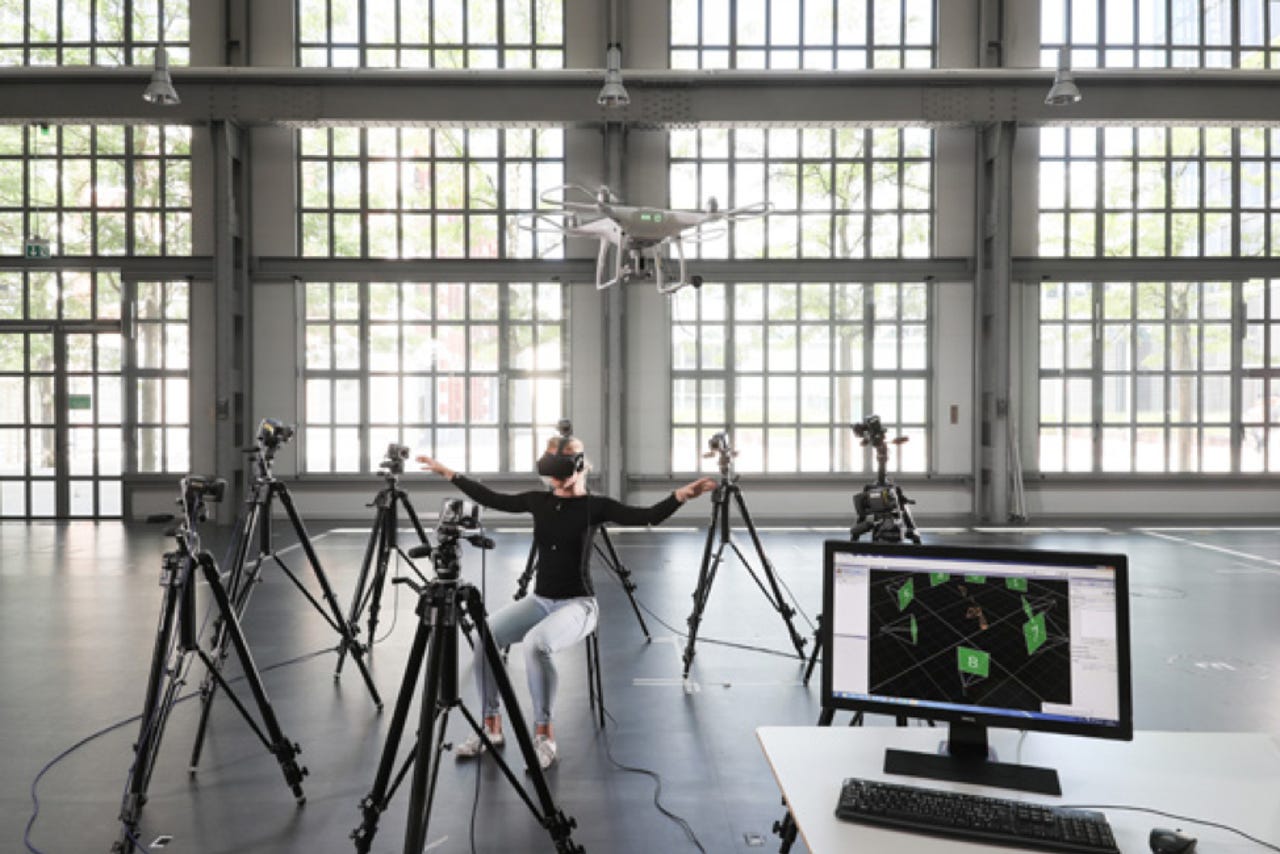All the right moves: Fly jacket turns your body into an intuitive joystick


If you want a chuckle, find some serious drone racers using first-person view (FPV) googles and keep an eye on them as they navigate a tough course.
The goggles, which afford a bird's-eye view and virtually place the pilot in the drone's cockpit, have become popular with enthusiasts. The effect can be startling. Viewing the world from the perspective of a drone seems to trick the brain after a while.
Though the pilots are using normal handheld controllers, their whole bodies begin to squirm and wriggle, as if they've taken flight themselves.
That tendency is the subject of a recent study out of EPFL, a research institute in Lausanne, Switzerland, which sought to determine whether the body itself could be turned into a superior control device.
"Our aim was to design a control method which would be easy to learn and therefore require less mental focus from the users so that they can focus on more important issues, like search and rescue," says lead author Jenifer Miehlbradt of EPFL's Translational Neuroengineering Laboratory. "Using your torso really gives you the feeling that you are actually flying. Joysticks, on the other hand, are of simple design but mastering their use to precisely control distant objects can be challenging."
The scientists used 19 infrared markers to observe the movements of their study subjects as they used virtual reality goggles to pilot a simulated drone. Movement patterns emerged that were common among the subjects.
Eventually, the researchers figured out they needed just four markers on the torso to control the drones through the virtual course successfully.
The results clearly demonstrate that using intuitive torso movements to control the drone results in better performance when compared with joystick control strategies. The learning curve was also much shallower, requiring very little training for participants to get the hang of flying with torso movements.
"Data analysis allowed us to develop a very simple and intuitive approach which could also be used with other populations, machines, and operations," says Silvestro Micera, NCCR Robotics Professor and Bertarelli Foundation Chair at the Scuola Superiore Sant'Anna in Italy. "The approach significantly improves the teleoperation of robots with non-human mechanical attributes."
EPFL researcher Carine Rognon took the study one step further by developing a usable fly jacket that can be used to pilot drones.
The lightweight garment translates torso movement into control commands without external motion detectors.
It's intuitive to use, meaning even first-time pilots can quickly navigate challenging courses, leaning into turns and pivoting on a dime.
"The Fly Jacket not only produces an immersive and intuitive flight control experience, but also frees the human hands for other tasks," says Floreano.
"For example, we have shown that humans could wear data gloves to give additional commands to the drone, like for take-off and landing, or to indicate points of interest seen from the drone perspective that would immediately appear on a map."
There's no word on how soon a jacket like this could be commercialized, but the technique paves the way for a promising new controls strategy for all kinds of robotics applications.